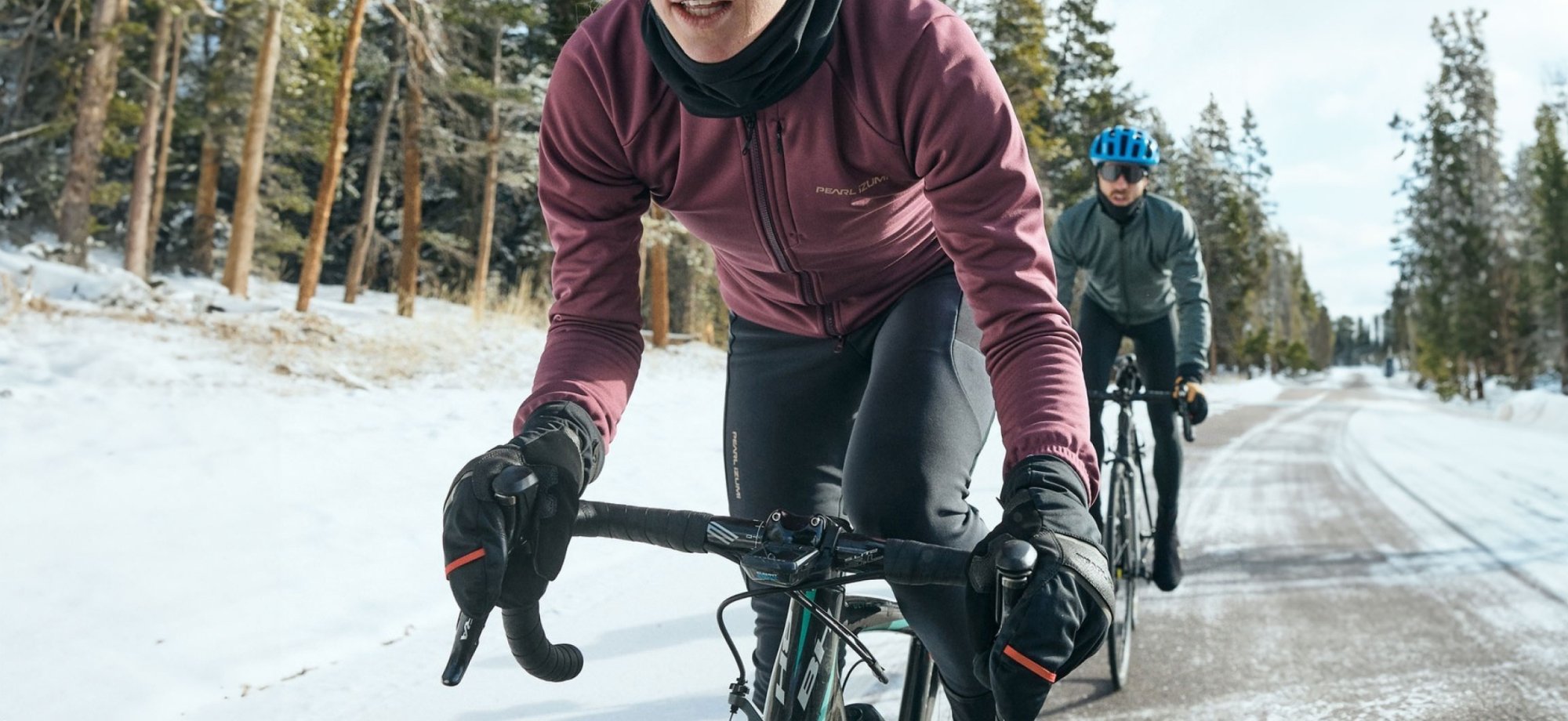Winter Gloves for Road
What to consider when selecting gloves for winter road cycling.

In most parts of the world, your summer gloves just won't cut it in winter. On a road bike, your hands are one of the most exposed parts of your body to swings in ambient temperature. Fingers numb from cold can miss crucial shifts and curtail your ability to quickly brake in an emergency. A good pair of winter road gloves can make all the difference between safely and comfortably riding your base miles outside or fleeing to an indoor trainer. That's why we've put together a list of things to look for to help keep you (and your fingers) covered when the mercury drops.
Just like the rest of your winter cycling clothing, your ideal winter road gloves will balance three attributes: insulation, fit, and shell material. Insulation is the loft that creates a buffer of warmth between your skin and the elements outside. Fit determines both your dexterity and the effectiveness of your insulation. Shell material simultaneously keeps the rain, wind, sleet, snow out of your insulation while reducing sweat by allowing your hands to breathe.

Insulation
Gloves designed for cold weather have more than just full-finger coverage. Their heavier insulation separates your hands–and the warmth that they generate–from cold air and handlebars. This loft is created using natural yarns such as wool or synthetic materials including fleece, foam, and Primaloft to reduce heat transfer. If you live in a location with mild winters, you may be able to get away with the lighter insulation offered by a wool knit glove. If you live somewhere where winter means snow-plowed roads and crosswinds that'll pick you up and carry you two states over, you'll probably want something closer to a lobster glove or a pogies system. When deciding on your level of glove insulation, you might find it helpful to consider the extremity of the weather you intend to ride in, and what the rest of your body's prepared to endure. Typically, gloves that are more expensive use more effective insulation that is less bulky than their cheaper alternatives.
Fit

So you've decided to just use a heavy ski glove with tons of lofty insulation to keep your fingers toasty no matter the wind and wet. That's great, except when it isn't. Heavy gloves made for snowsports are often bulky, and bulk reduces your ability to feel minutiae like lever feedback for brake modulation, the difference between your lever and your shifter paddle, and may even prevent your hand from fitting between your drops and the inside of your controls. Luckily, there are many cycling-specific gloves for winter riding. When selecting yours, make sure they're flexible enough for easy position changes, tight enough to keep crosswinds and tire spray out, but loose enough to promote blood flow (remember, good circulation is what keeps the heater on). A long gauntlet with secure closures can make a big difference when it comes to keeping your heat in and cold out.
Shell Material

As your first defense against winter's chill, your gloves' shell material plays an outsized role in protecting your hands. Look for grippy materials like leather and suede on the palm, thumb, and forefinger for added control over wet levers. Waterproof fabrics like Neoprene and Goretex can help resist wind and wet, but are typically less breathable than a wool knit or DWR-coated fabric. Nylon fabrics coated in DWR (durable water repellent) will encourage water to bead and slough off your gloves before soaking them out, but require a little extra care when laundering to preserve the DWR finish. Whichever you choose, keep an eye out for handy features like touchscreen compatibility, high-vis color options, and silicon grip patterns. Oh, and stay away from cotton.
One last thing...

A final consideration for roadies is the aerodynamic penalty of winter gloves. Bulky gloves and pogies increase the overall surface area of the front of your bike, and therefore add slightly more drag than warm weather gloves. But before you fret over it, remember that the overall added drag is minor compared to your body position, bike design, and wind conditions. If you're still concerned about aero, consider using a more form-fitted, water resistant, middleweight glove for your area's classics as winter yields to spring.
As with most other things in road cycling, choosing a winter glove is unique to you–your local climate, your ride preferences, and your physiology. Consider trying a few different styles and brands before committing your precious extremities to a six-hour epic through the next bomb cyclone. And if that ride takes you into the hinterlands, be sure to read our article about choosing winter gloves for gravel cycling.
Related Articles
WINTER RIDING HOMEPAGE
The days are short and cold, but that doesn’t have to stop you from riding. We’ve compiled all our tips and tricks for staying warm and dry through the winter months.
Learn More
MERINO: THE BEST WINTER SOCKS
Merino socks are perfect for regulating temperature, keeping you dry & sweat-free all while being soft & comfortable!
Learn More


